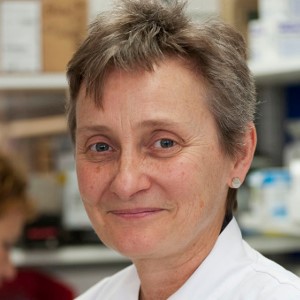Professor Janet Shipley
Institute of Cancer Research
Awarded: £149,812
The challenge
Desmoplastic small round cell tumours (DSRCT) and Ewing’s sarcoma have very few treatments available, and are especially common in children and young adults. Professor Janet Shipley and her team aim to improve treatments for these patients, starting by understanding the biology behind these cancers.
It is vital that our genes work properly, as they contain the instructions for tasks our cells need to perform. Sometimes two genes can join together, to form what is known as a fusion gene. DSRCT and Ewing’s sarcomas have a particular fusion gene called EWSR1. Analysing fusion genes might help us predict how cancers will respond to particular treatments. For people with Ewing’s and DSCRT, the action of the EWSR1 fusion gene can disrupt how their cells grow and develop.
How will this project tackle this challenge?
Luckily, Professor Shipley and her team have found that, in theory, you can stop this from happening with a particular drug. The next step is to test this in models to see if it’s got potential in patients as a treatment.
To do this, the team will make state-of-the-art 3D models of DSRCT and Ewing’s to copy how they behave in the body. They will test these models with the drug, combined with other treatment types such as immunotherapy – and they will develop biological markers of how effective each treatment is and who is likely to benefit.
What this means for people affected by sarcoma
For 85% of DSRCT patients and 40% of Ewing’s patients, chemotherapy and radiotherapy don’t work long-term, so new treatment options are urgently needed. It’s particularly exciting to see research into DSRCT, which is incredibly rare. The team hope that this research will be the first step towards a new way of treating sarcoma patients with this genetic make-up or other similar ones.
It’s particularly exciting to see research into DSRCT, which is incredibly rare. The team hope that this research will be the first step towards a new way of treating sarcoma patients with this genetic make-up or other similar ones.













